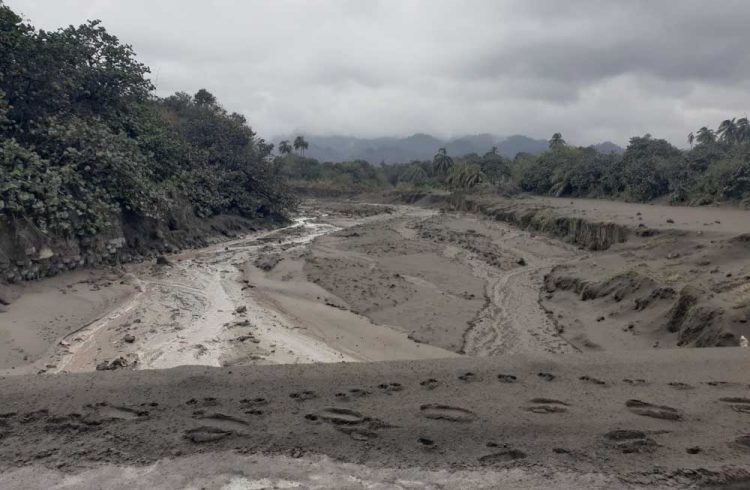Mud flows from volcano may become more frequent

A volcano hazard that may become more frequent with the approach of the rainy season is the presence of lahars or mud flows, like the one recorded this morning on the south eastern side of La Soufrière.
La Soufrière last exploded on the evening of April 18, 52 hours after the explosive activity which began at approximately 6:15am on Friday, April 16.
The pattern of small long period and hybrid earthquakes continues, and rock falls have been noted. Rock falls may be one of the things associated with dome growth.
The scientists monitoring the volcano recorded a lahar or mud flow signal at approximately 4am on the morning of April 20. “It was recorded at the station in Bamboo Range, which suggests to us that a lahar or mud flow came down a river, one of those rivers on the southeast(of the volcano),” volcanologist Professor Richard Robertson, lead scientist on the ground monitoring La Soufrière, said while giving an update on NBC radio.
The signal lasted for about 30 minutes.
Robertson explained, “You have a lot of deposits up at the summit and we’d expect that as rains come, as we get into the rainy season, whatever else happens at the volcano, one of the hazards that are going to become more pronounced or more likely are mud flows.”
There may be flooding of lower areas, damage to houses, and bridges.
The thick muddy river, when it comes down the mountainside, it will be “bringing all the blocks, pieces of vegetation and everything that the volcano has destroyed on the summit and just resting in the ground.”
Robertson cautioned that it has a lot more potential to cause damage than a river in flood, because of all the material inside of it.
Additionally, “…If there’re any places in St Vincent that had a lot of ash, when the rain falls all of that ash is going to come off and go into the drainage system, go into the river and they could potentially cause some element of damage.”
“…If you’re going into an area where you have a valley, or a river valley, you have to be a little more aware of the potential for this kind of hazard to happen now because we have so much material on the land,” the volcanologist noted.
While the gaps between explosive eruptions seem to be widening, persons are cautioned that the pattern could change at any time.
“Once volcanos are erupting as they are now, and once they have shown that they have a potential to be explosive and could be dangerously and violently explosive as this one has shown, it really makes sense for you to stay away from them,” Robertson said.









